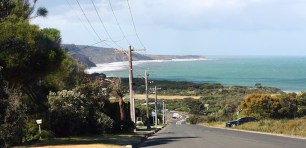
A shot of the Brisbane River. Source: Brisbane Local Marketing.
The property market was nothing short of unpredictable and difficult to read through 2020.
Yet we look to be entering a year where all the economists and property research houses are predicting positive growth across all markets. Who would have thought?
There will be anomalies, of course, but here are the trends you can count on in 2021.
Affordability and lifestyle: Regional centres within 90 minutes of Sydney and Melbourne
Housing unaffordability has been driving this social trend and COVID-19 has come along and really amplified it.
With densely populated cities more expensive and harder to navigate, and in some cases, due to lockdowns, not offering the quality of life we all crave, many saw 2020 as a year to reflect and redirect themselves to outer regions where price point and lifestyle is more favourable.
We already see this in Queensland, where only 48% of the population live in the capital city of Brisbane and the rest is dispersed out to major hubs such as the Sunshine Coast and the Gold Coast, Toowoomba, Ipswich and many more.
For context, 76% of Victoria’s population live in Melbourne, while Sydney sits at 65%.
The towns must have adequate transport and ease of access to main arterials.
Getting to the capital cities will still be important for these sea and tree changers, as will the central location within the town.
Walkability and education are important for families as are healthcare services for downsizers. Keep this in mind when assessing the property itself.
These regions are also sought after by investors who are keen to establish a ‘foothold’ in one of the holiday regions, such as Daylesford, the Mornington Peninsula or the Bellarine Peninsula.
With a number of factors — such as less overseas holiday travel, low-interest rates and less commuting — allowing for more cash in the bank and a greater focus on what matters most, families want to secure an ‘escape property’ for themselves, a destination they can flee too should lockdowns or pandemics strike again.
More ‘knockdown and rebuild strategies’ in the middle-ring suburbs
According to McCrindle Research, 78% of people surveyed believe working from home is here to stay with most expecting this to be two or three days a week.
But how many of us actually have the space to do this, especially in dual-income houses?
Renovations can be expensive and unpredictable.
Whereas the growing trend of knocking down an old 150 square metre, 1950s–1970s weatherboard or brick home, on 400–800 square metres of land, and replacing it with new build, can not only solve the working-from-home problem, but also result in a very profitable project.
Our smaller cities take flight
With less interest in moving to the big smoke from our smaller cities, natural-born residents will consider staying put and working in their home cities while the uncertainty is around.
The big question is, how compelling will this be in the long term?
The big cities of Melbourne and Sydney house our largest institutions, banks, insurers, super funds and the head offices of most major corporates outside of mining and resources.
They will eventually draw talent from interstate and overseas, and although moving home to Adelaide or Brisbane might be possible if you’re already employed, landing a job from interstate and never being in the office is quite difficult, even impossible.
In summary, the smaller cities of Perth and Adelaide will be strong next year as residents stay put or head home, but in the long run, Melbourne and Sydney will prevail and deliver superior return on investment as they offer higher paying jobs for more people and this drives the property market.
Is the inner-city out of favour?
Apartments are not one property style on their own, there is low rise, high rise, concierge, and facilities, versus art deco walk-ups, with no lift, with plenty of character and charm.
And many more versions of these lifestyle-driven properties are often bought for convenience and affordability.
Generally speaking, the bigger buildings will suffer, although locations such as East Melbourne and Spring Street in Melbourne’s CBD are always sought after and rarely drop in value.
But is this the best place to invest in 2021?
No! Houses will always outperform in the inner-city regions as they are not building them anymore, if anything they are slowing decreasing in numbers to make way for apartments and townhouses.
It’s a simple supply and demand equation.
Expats will be heading home and if returning from New York, London, Hong Kong and LA will be used to the cosmopolitan lifestyle and see the capital city lifestyles as less congested and more liveable than where they’ve come from.
This influx of established wealth will make up for any city escapers who are selling down or moving to the regions.
The cities will bounce back and continue to be our central place of business, leisure and events.
The beautiful established parks and gardens, along with the best food and experiences in town, will draw people back. Plus, being ‘central’ with quick access to the best schools, arterials and major shopping hubs will mean these 3–10km regions will be highly sought after.
Handpicked for you

Demand for regional properties soars as office workers move away from Australia’s cities



COMMENTS
SmartCompany is committed to hosting lively discussions. Help us keep the conversation useful, interesting and welcoming. We aim to publish comments quickly in the interest of promoting robust conversation, but we’re a small team and we deploy filters to protect against legal risk. Occasionally your comment may be held up while it is being reviewed, but we’re working as fast as we can to keep the conversation rolling.
The SmartCompany comment section is members-only content. Please subscribe to leave a comment.
The SmartCompany comment section is members-only content. Please login to leave a comment.